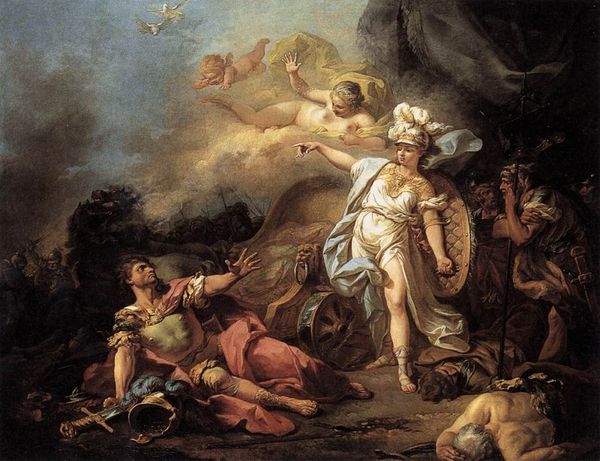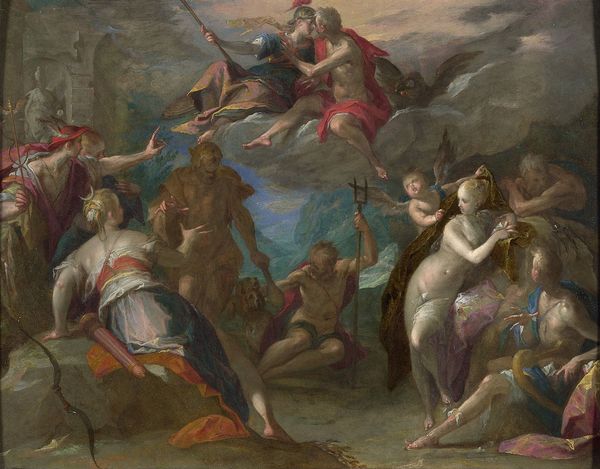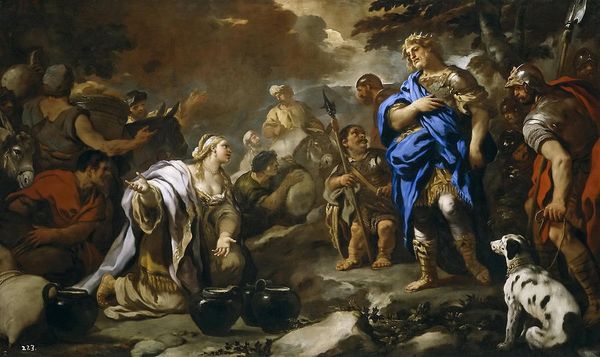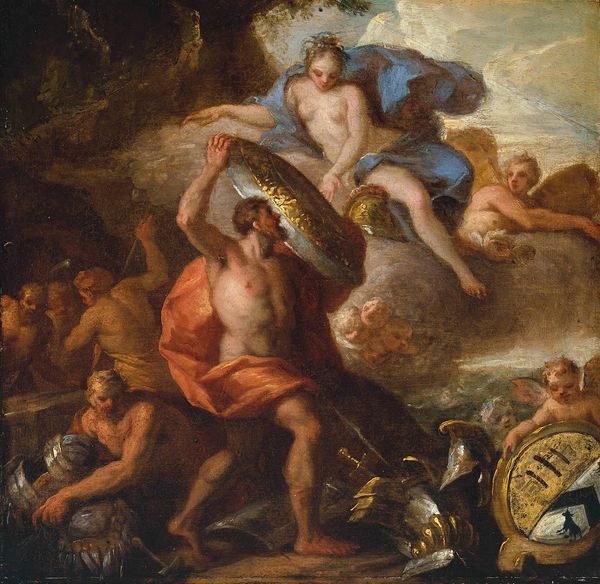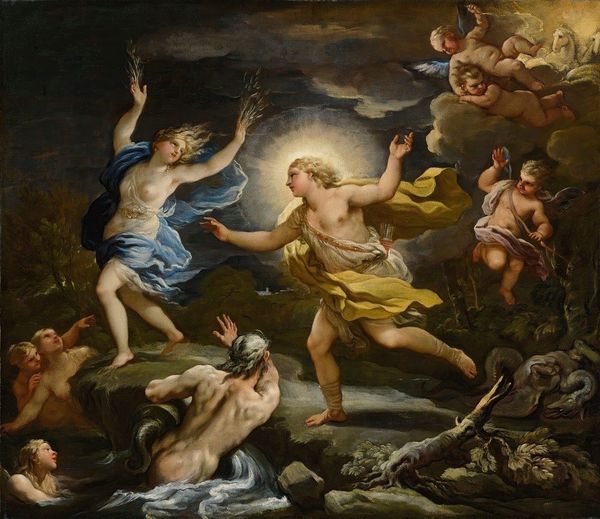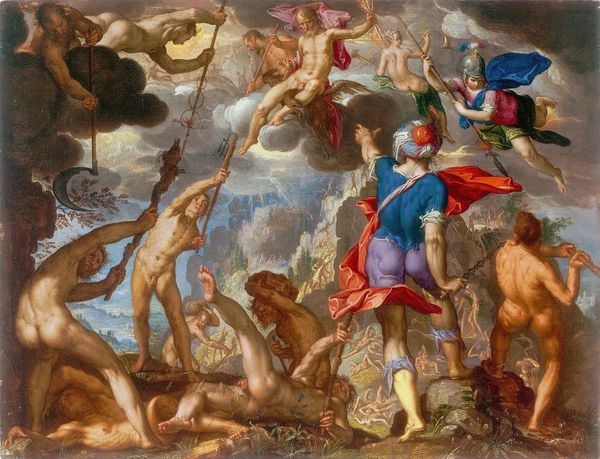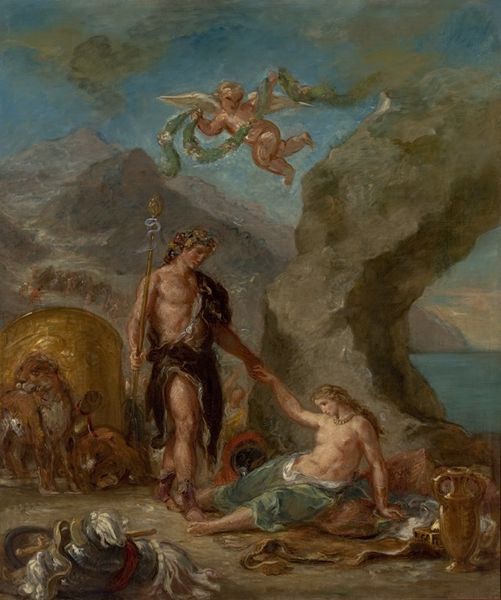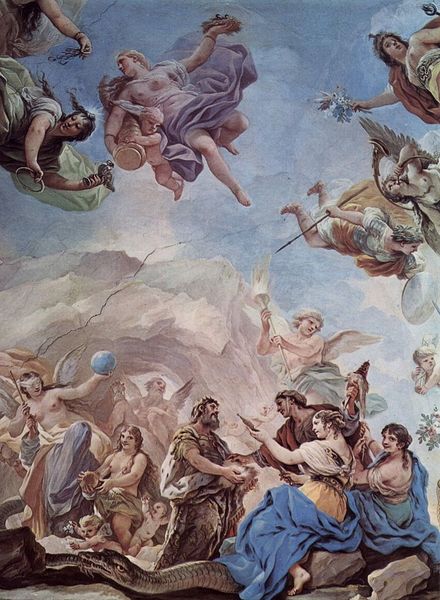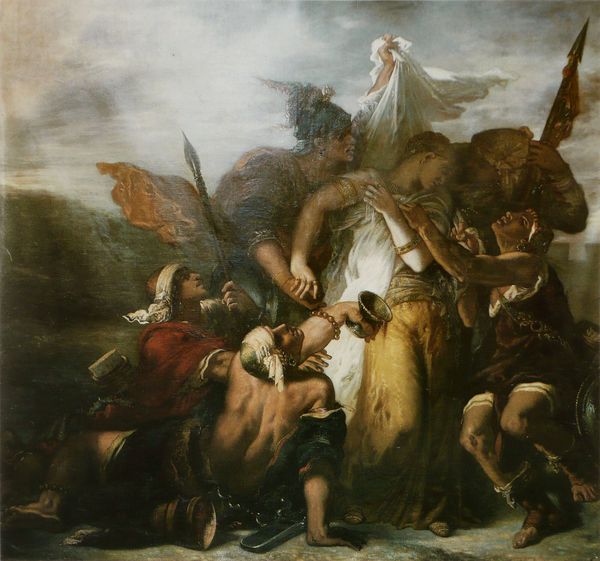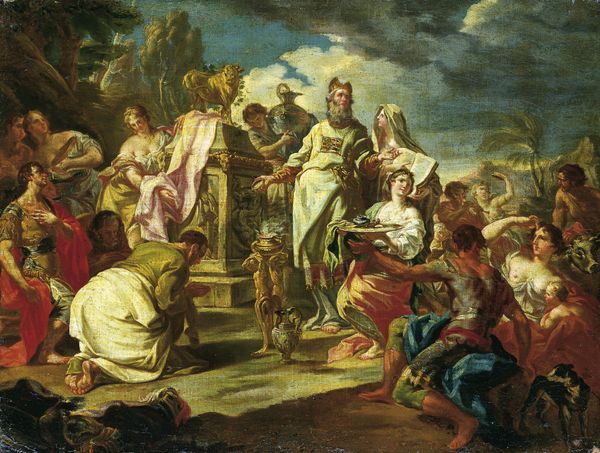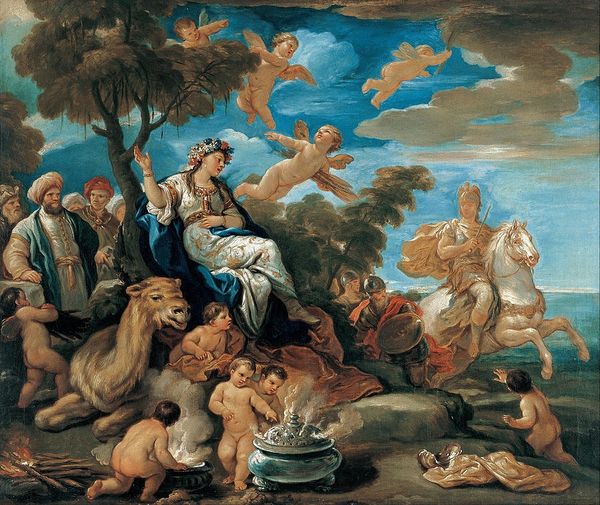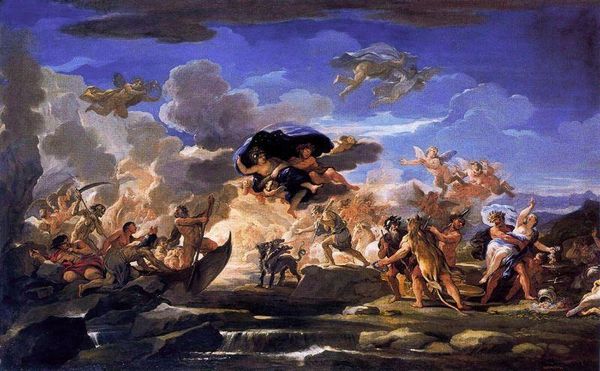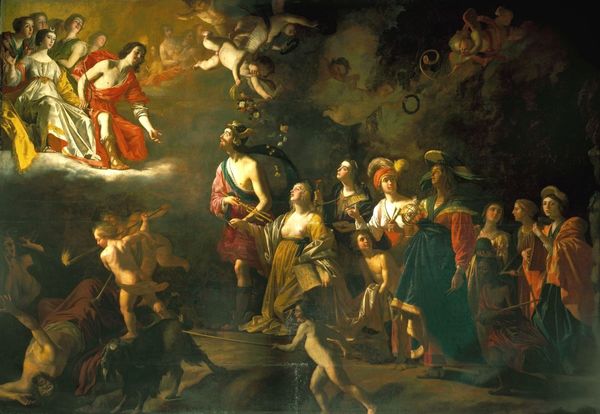
painting, oil-paint
#
allegory
#
baroque
#
painting
#
oil-paint
#
landscape
#
figuration
#
oil painting
#
history-painting
#
nude
Copyright: Public domain
Editor: This painting, by Luca Giordano, is titled "Series of the Four Parts of the World: America." It's oil on canvas, and it looks incredibly busy, full of figures and detail. There’s this powerful Indigenous figure with a bow and arrow, but also ships in the distance suggesting conquest. What can you tell me about this complex scene? Curator: It’s crucial to understand this through the lens of its historical context. Allegorical representations like this were very common in Baroque art, specifically within institutions that wielded symbolic power, such as royal courts or academies. Consider what "America" represented in the European imagination at the time: a land of exoticism, natural abundance, and, most importantly, potential conquest. Editor: So, it’s less about accurately depicting America and more about European perceptions? Curator: Precisely. Note the idealized, almost classical figures, even the indigenous ones. Giordano isn't striving for ethnographic accuracy. Instead, he’s using allegory to articulate a certain narrative— one of European dominance and the "civilizing" of the Americas. See how the figure of America is partially nude? It plays into the trope of the ‘untamed’ land awaiting European influence. Editor: I hadn't considered how much power is embedded in even seemingly simple choices, like depicting a partially nude figure. So, how was a piece like this displayed and viewed in its time? Curator: These paintings often adorned palaces or important administrative buildings, reinforcing the power structures of the time. Viewing wasn’t passive; it was a reinforcement of a specific worldview – the right to expansion, resource extraction, and cultural reshaping. Understanding the politics of imagery in works like these helps us understand historical power dynamics. Editor: That really reframes the entire artwork for me. It’s not just a beautiful painting, but a carefully constructed statement about power. Curator: Exactly! And recognizing that embedded ideology allows us to critically examine how these historical representations continue to influence our understanding of the world today.
Comments
No comments
Be the first to comment and join the conversation on the ultimate creative platform.
